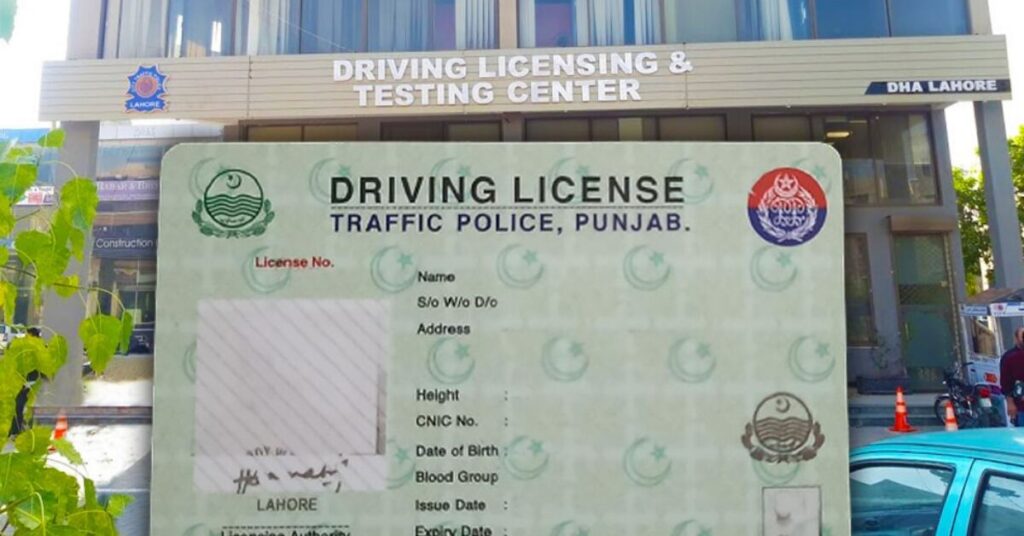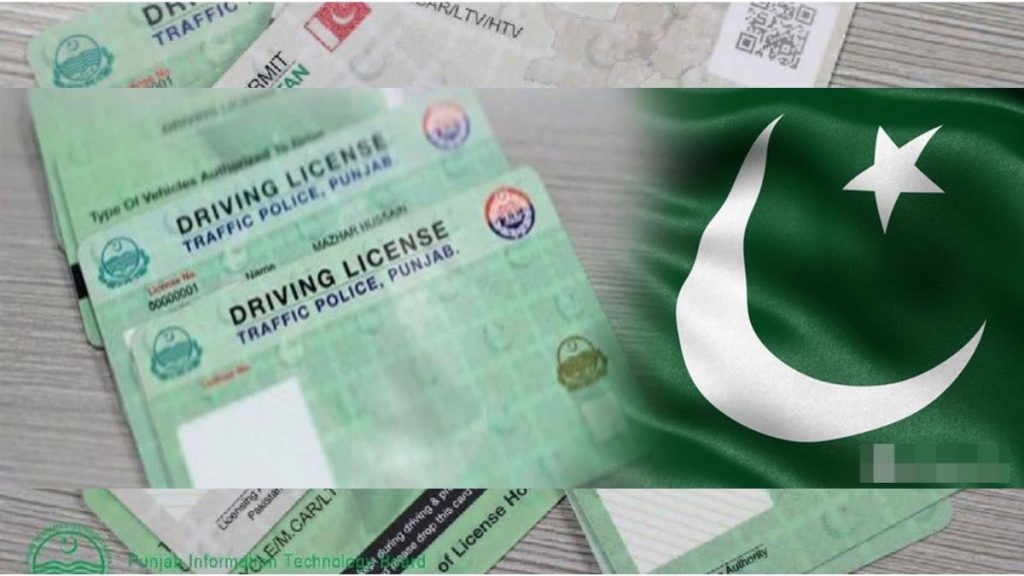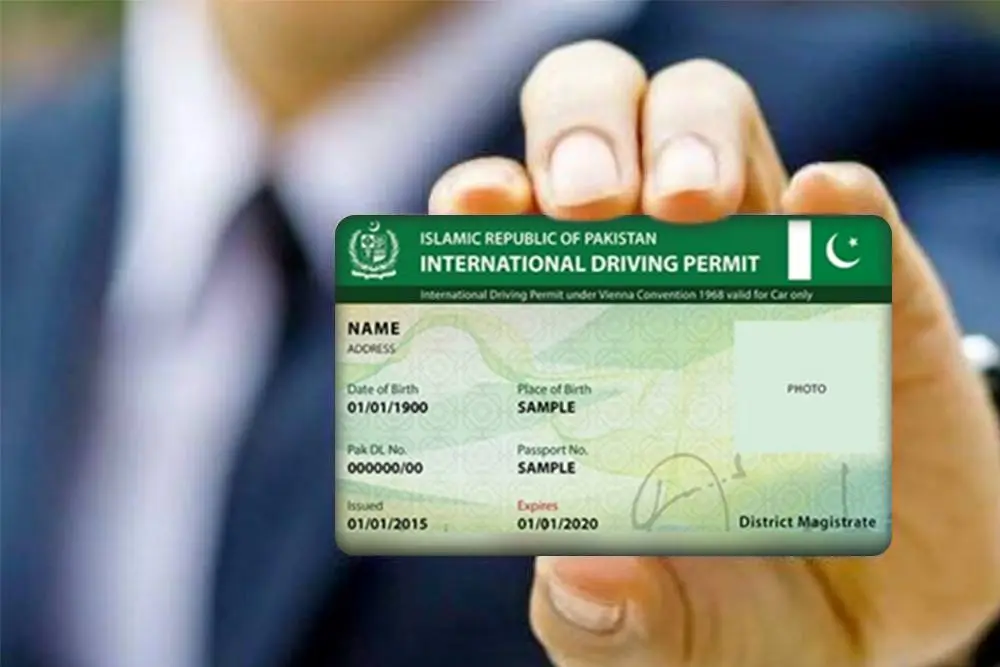A driving license is more than just a permit to operate a vehicle; it is a testament to your understanding of traffic laws, road safety, and responsible driving behavior. In Pakistan, the process of obtaining a driving license has been streamlined over the years, with advancements in technology making it more accessible and efficient. However, the process can still seem daunting, especially for first-time applicants. This guide aims to simplify the journey, providing you with a clear, step-by-step approach to securing your driving license, whether you’re applying in Punjab, Sindh, Khyber Pakhtunkhwa (KPK), or any other region in Pakistan.
Why You Need a Driving License
Before diving into the application process, it’s essential to understand why a driving license is necessary. Beyond the legal requirement, a driving license ensures that you have been tested and deemed capable of driving safely. It also serves as a form of identification and can be crucial in situations like renting a vehicle or verifying your identity. Moreover, having a valid license can save you from hefty fines and legal complications, making it an indispensable document for anyone who wishes to drive in Pakistan.
Eligibility Criteria for a Driving License in Pakistan
To apply for a driving license in Pakistan, you must meet specific eligibility criteria. These criteria ensure that only individuals who are physically and mentally capable of driving are granted the privilege to do so.
Age Requirements
- Minimum Age: You must be at least 18 years old to apply for a driving license for a motorcycle or motorcar. For commercial vehicles, the minimum age is typically higher, often 21 years or older.
Required Documents
- National Identity Card (CNIC): A valid CNIC is mandatory for all applicants.
- Medical Certificate: Applicants over the age of 50 or those applying for commercial licenses must provide a medical certificate from an authorized medical practitioner.
- Proof of Residence: Some provinces may require proof of residence, such as a lease agreement or utility bill.
Physical and Mental Fitness
- Applicants must be free from any medical conditions that could impair their ability to drive safely. Conditions like uncontrolled epilepsy, severe cardiovascular disorders, or visual impairments may disqualify you from obtaining a license.
Types of Driving Licenses in Pakistan
Understanding the different types of driving licenses available in Pakistan is crucial, as each type caters to specific needs and vehicle categories.
Learner’s Permit
A learner’s permit is the first step in the licensing process. It allows you to practice driving under the supervision of a licensed driver. The permit is typically valid for six months, during which you must pass the necessary tests to obtain a permanent license.
Permanent Driving License
Once you have successfully passed the required tests, you can apply for a permanent driving license. This license is usually valid for five years and can be renewed upon expiration.
International Driving Permit (IDP)
An International Driving Permit is essential if you plan to drive outside Pakistan. It translates your domestic license into multiple languages and is recognized in over 175 countries.
Step-by-Step Guide to Applying for a Driving License
The process of applying for a driving license in Pakistan varies slightly depending on the province, but the general steps remain consistent. Below is a detailed guide to help you navigate the process.
Step 1: Obtain a Learner’s Permit
Before you can apply for a permanent driving license, you must first obtain a learner’s permit. This permit allows you to learn and practice driving under supervision.
How to Apply for a Learner’s Permit
- Visit the Licensing Authority: Go to the nearest licensing authority office in your district. In some provinces, you can also apply online through platforms like DLIMS in Punjab or DLS Online in Sindh.
- Submit Required Documents: Provide your CNIC, a medical certificate (if applicable), and proof of residence. You may also need to submit a passport-sized photograph.
- Pay the Fee: The fee for a learner’s permit varies by province but is generally around Rs. 500.
- Take the Written Test: Some provinces require you to pass a written test on traffic rules and regulations before issuing the learner’s permit.
Once you have your learner’s permit, you can begin practicing driving. Remember, you must always be accompanied by a licensed driver during this period.
Step 2: Prepare for the Driving Tests
After obtaining your learner’s permit, you must prepare for the driving tests, which include both a written exam and a practical driving test.
Written Test
The written test assesses your knowledge of traffic laws, road signs, and safe driving practices. To prepare:
- Study the Traffic Rule Book: Obtain a copy of the traffic rule book from your local traffic police office or download it online.
- Take Practice Tests: Many provinces offer online practice tests to help you familiarize yourself with the exam format.
Practical Driving Test
The practical test evaluates your ability to drive safely in real-world conditions. It typically includes:
- Vehicle Control: Demonstrating your ability to start, stop, and maneuver the vehicle.
- Road Awareness: Showing awareness of road signs, signals, and other vehicles.
- Parking: Performing parallel parking or reversing into a parking space.
Step 3: Schedule and Take the Driving Tests
Once you feel confident in your driving skills and knowledge, you can schedule your driving tests.
Scheduling the Tests
- Book an Appointment: In provinces like Punjab, you can book your test appointment online through the DLIMS portal. In other regions, you may need to visit the licensing authority in person.
- Bring Required Documents: On the day of the test, bring your learner’s permit, CNIC, and any other required documents.
Taking the Tests
- Written Test: Arrive on time and complete the written exam. You must score at least 50% to pass.
- Practical Test: If you pass the written test, you will proceed to the practical driving test. Be prepared to demonstrate your driving skills in various scenarios.
Step 4: Apply for the Permanent Driving License
After successfully passing both the written and practical tests, you can apply for your permanent driving license.
Application Process
- Submit Application Form: Fill out the application form for a permanent driving license. This can often be done online or at the licensing authority office.
- Provide Necessary Documents: Submit your CNIC, learner’s permit, and any other required documents, such as a medical certificate if applicable.
- Pay the Fee: The fee for a permanent driving license varies but is typically around Rs. 1000 for a five-year license.
- Biometric Verification: In some provinces, you may need to undergo biometric verification, including fingerprinting and a photograph.
Step 5: Receive Your Driving License
Once your application is processed, your driving license will be issued. In some cases, it may be mailed to your address, while in others, you may need to collect it from the licensing authority office.
- Digital Copy: In provinces like Punjab, you can download a digital copy of your license from the DLIMS portal.
- Physical Card: The physical license card is usually a smart card embedded with your personal information and driving history.
Special Considerations for Different Provinces
While the general process is similar across Pakistan, there are some province-specific variations to be aware of.
Punjab
- Online Application: Punjab offers a fully online application process through the DLIMS portal, making it convenient for applicants to apply from home.
- E-License: You can download an electronic version of your license, which is valid for use within Pakistan.
Sindh
- DLS Online: Sindh has introduced the DLS Online platform, allowing applicants to apply for learner’s permits and renewals online.
- Courier Service: Licenses can be delivered to your doorstep via courier, adding to the convenience.
Khyber Pakhtunkhwa (KPK)
- DLIMS KPK: KPK has its own DLIMS platform, offering services like online verification and application tracking.
- Traffic Police Assistance: The KPK Traffic Police provide support and guidance throughout the application process.
Islamabad
- Capital Territory Police: Islamabad has a dedicated portal for license verification and application status checks.
- Medical Facilities: Medical facilities are available at the Islamabad Traffic Police office for applicants who need to undergo medical examinations.
Renewing Your Driving License
Driving licenses in Pakistan are typically valid for five years, after which they must be renewed. The renewal process is straightforward and can often be completed online.
Steps for Renewal
- Log In to the Portal: Use the respective provincial portal (e.g., DLIMS for Punjab) to access the renewal section.
- Upload Documents: Provide a scanned copy of your expired license, CNIC, and a recent photograph.
- Pay the Renewal Fee: Fees vary by province but are generally lower than the initial application fee.
- Receive Your Renewed License: Once processed, your renewed license will be sent to you, either digitally or via courier.
International Driving Permit (IDP)
If you plan to drive outside Pakistan, you may need an International Driving Permit (IDP). This document translates your Pakistani driving license into multiple languages and is recognized globally.
How to Apply for an IDP
- Eligibility: You must hold a valid Pakistani driving license.
- Application Form: Fill out the IDP application form, available at the licensing authority or online.
- Submit Documents: Provide your CNIC, passport, and a copy of your driving license.
- Pay the Fee: The fee for an IDP is typically around Rs. 1000.
- Receive Your IDP: The IDP is usually issued within a few days and is valid for one year.
Tips for a Successful Application
To ensure a smooth application process, keep the following tips in mind:
- Prepare in Advance: Gather all required documents before starting the application process to avoid delays.
- Study Thoroughly: Take the time to study traffic rules and regulations to pass the written test with ease.
- Practice Driving: Spend ample time practicing driving, especially in areas where you might be tested, such as parallel parking.
- Check Provincial Requirements: Be aware of any specific requirements or procedures unique to your province.
- Use Online Resources: Take advantage of online platforms for applications, payments, and status checks to save time.
- For more detail visit Traffic signs test
Conclusion
Applying for a driving license in Pakistan is a structured process designed to ensure that only qualified individuals are allowed to drive on public roads. By following the steps outlined in this guide, you can navigate the process with confidence and ease. Whether you’re applying for a learner’s permit, a permanent license, or an international driving permit, understanding the requirements and preparing accordingly is key to success. Remember, a driving license is not just a legal requirement; it’s a commitment to road safety and responsible driving. So, take the first step today and embark on your journey to becoming a licensed driver in Pakistan.


